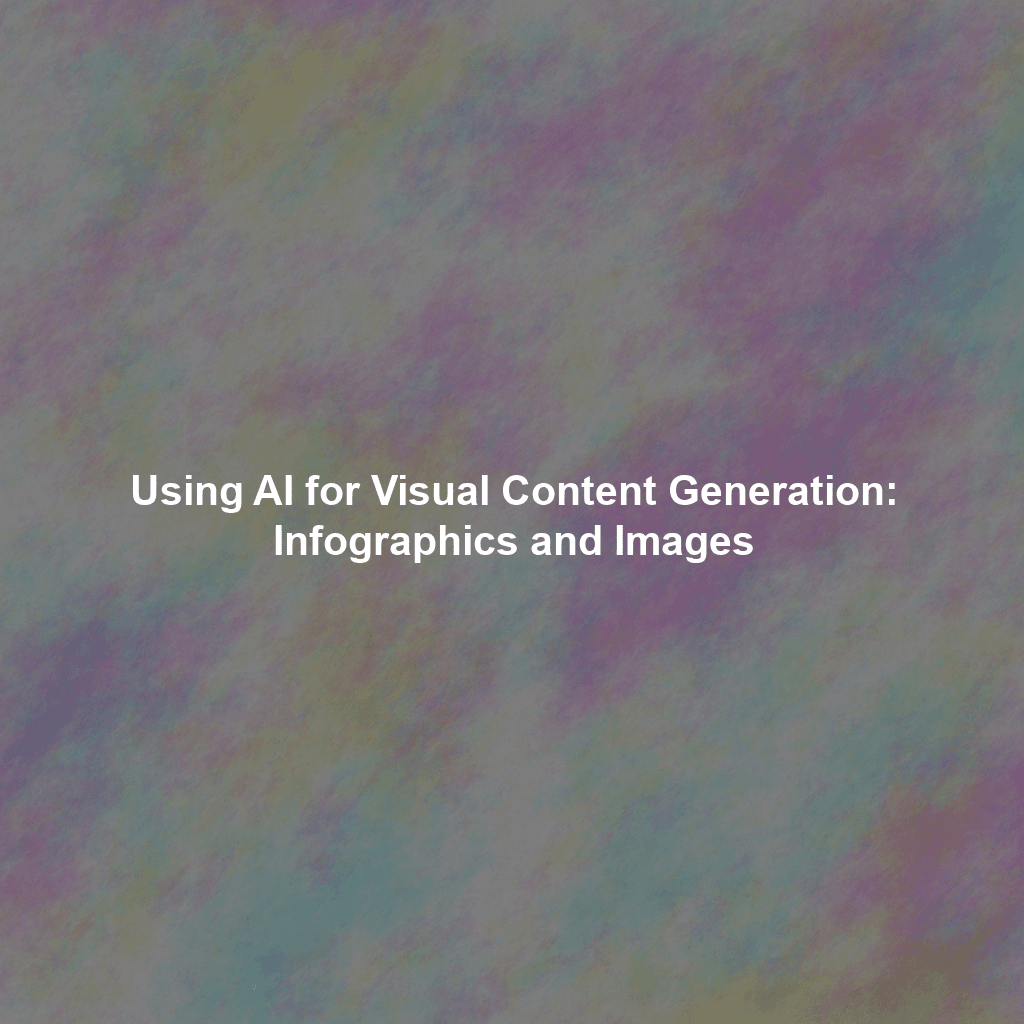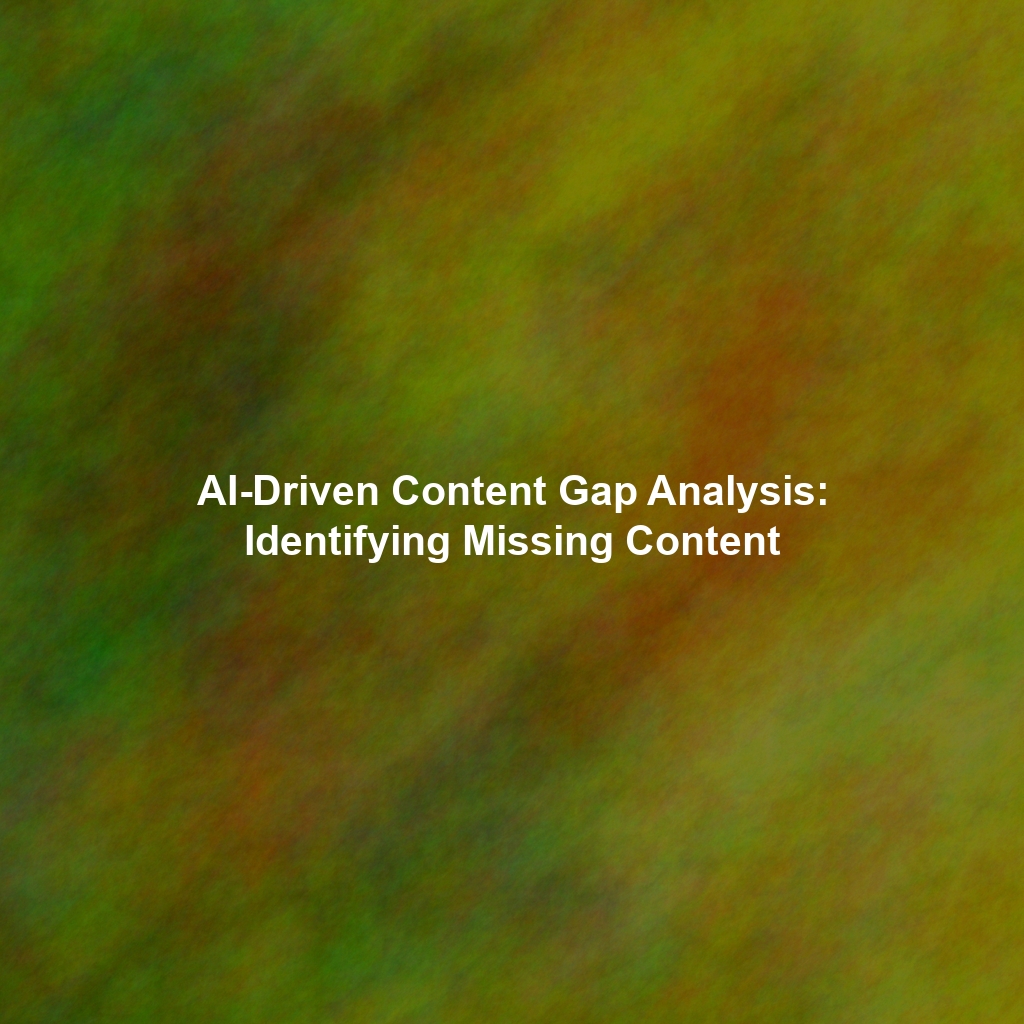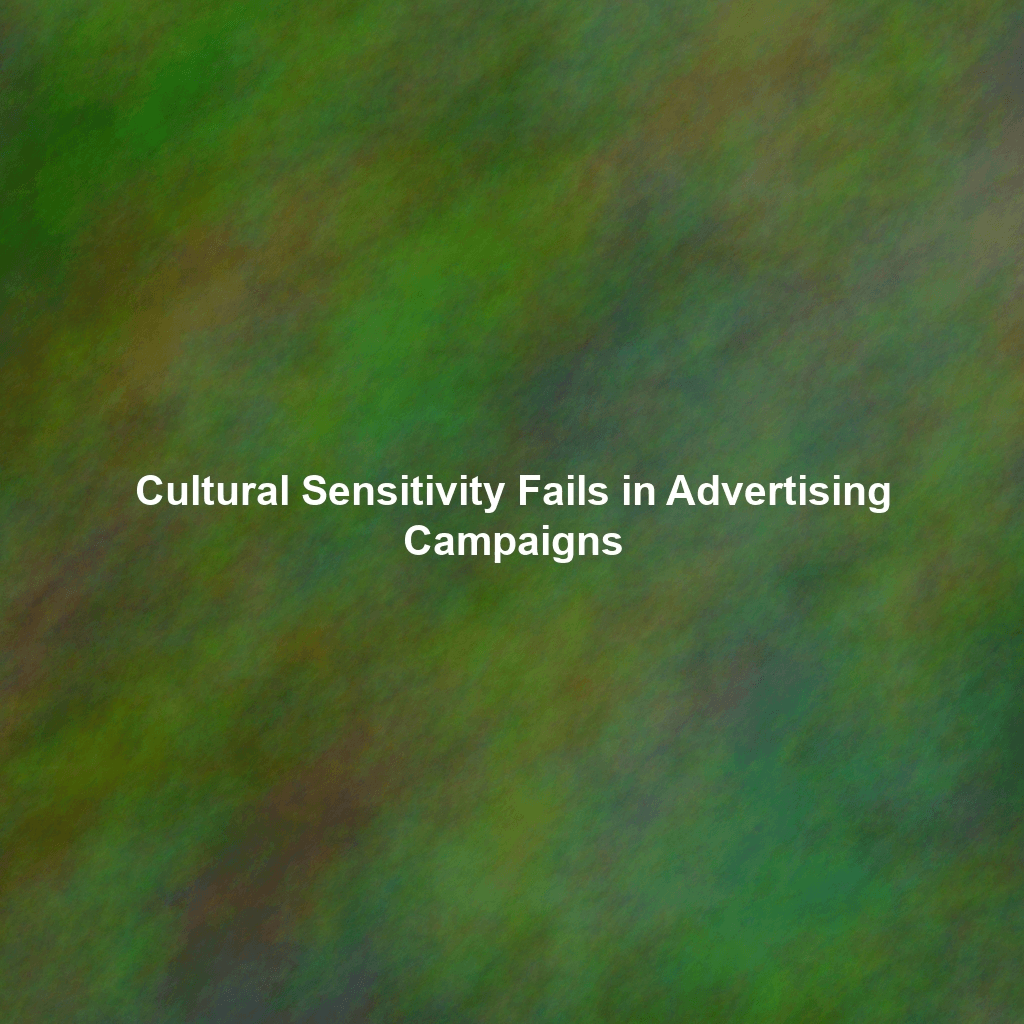Introduction: The Rise of AI in Visual Content
Understanding the Power of Visual Content
Before diving into the specifics of AI, let’s understand why visual content is so crucial for content marketing success. In today’s digital landscape, attention spans are short, and audiences are bombarded with information. Visuals cut through the noise, capturing attention and conveying complex information quickly and effectively. Think about it: a well-designed infographic can explain intricate data points far more efficiently than paragraphs of text. A captivating image can evoke emotion and create a connection with your audience in a way that words alone often struggle to achieve.
Specifically:
- Increased Engagement: Visuals grab attention and encourage users to interact with your content.
- Improved Comprehension: Visuals can simplify complex information, making it easier for audiences to understand and retain.
- Enhanced Brand Recognition: Consistent visual branding helps build brand recognition and fosters a strong brand identity.
- Boosted Social Sharing: Visually appealing content is more likely to be shared on social media platforms, increasing your reach and visibility.
AI-Powered Infographics: Data Made Beautiful
Infographics are powerful tools for presenting data and information in a visually appealing and easily digestible format. However, creating high-quality infographics can be time-consuming and require specialized design skills. This is where AI comes in.
AI-powered infographic tools can automate many aspects of the design process, helping you create stunning visuals in a fraction of the time. These tools often offer features such as:
- Automated Layout Generation: AI algorithms can analyze your data and automatically generate appropriate layouts and chart types.
- Smart Design Suggestions: These tools can provide design recommendations based on your content and target audience.
- Data Visualization Assistance: AI can help you choose the most effective ways to visualize your data, ensuring clarity and impact.
- Content Summarization: Some tools can automatically summarize key insights from your data to highlight the most important points.
Benefits of Using AI for Infographics:
- Time Savings: Automate tedious tasks and streamline the design process.
- Cost Reduction: Reduce the need for expensive graphic designers.
- Data-Driven Design: Ensure your infographics are based on solid data and effective visualization techniques.
- Improved Consistency: Maintain consistent branding and design across all your infographics.
AI Image Generation: Unleashing Creativity
Finding the perfect image for your content can be a challenge. Stock photos can be expensive and often lack the originality needed to truly capture your brand’s unique personality. AI image generation offers a solution by allowing you to create custom images tailored to your specific needs.
AI image generators use sophisticated algorithms, often based on generative adversarial networks (GANs) or diffusion models, to create images from text descriptions. You simply provide a text prompt, describing the image you want to generate, and the AI will create a unique visual based on your input.
How AI Image Generation Works:
- Text Input: You provide a detailed text description of the image you want to create.
- AI Processing: The AI algorithm analyzes your text prompt and translates it into visual concepts.
- Image Generation: The AI generates an image based on its understanding of your text prompt and its vast database of images.
- Refinement and Iteration: You can refine the generated image by providing additional feedback or modifying the text prompt.
Applications of AI Image Generation in Content Marketing:
- Blog Post Illustrations: Create unique and relevant images to accompany your blog posts.
- Social Media Graphics: Generate eye-catching graphics for your social media campaigns.
- Website Banners: Design custom banners for your website to enhance its visual appeal.
- Product Mockups: Create realistic product mockups to showcase your products in action.
Choosing the Right AI Tools for Your Needs
The market for AI-powered visual content generation tools is rapidly expanding. With so many options available, it’s essential to choose the right tools for your specific needs and budget. Consider the following factors when evaluating AI tools:
- Ease of Use: Look for tools with intuitive interfaces and user-friendly features.
- Customization Options: Choose tools that offer a wide range of customization options to match your brand’s style and aesthetic.
- Image Quality: Evaluate the quality of the images generated by the AI tools.
- Pricing: Compare the pricing plans of different tools and choose one that fits your budget.
- Integration Capabilities: Ensure the tool integrates seamlessly with your existing workflow and content management systems.
- Specific Features: Does the software align with your content needs? (e.g., some infographic tools focus on data visualization, while others are better for conceptual representations.)
Examples of AI tools in the market (This changes rapidly, so stay up to date on review sites!):
- For Infographics: Tools boasting AI integration to simplify data-driven visuals.
- For Images: Tools focused on generating photorealistic and artistic images from text prompts.
Best Practices for Using AI in Visual Content Creation
While AI can be a powerful tool for visual content generation, it’s important to use it effectively and ethically. Here are some best practices to keep in mind:
- Start with a Clear Strategy: Define your content goals and target audience before using AI to generate visuals.
- Provide Detailed Prompts: The more detailed and specific your text prompts, the better the AI will be able to generate the desired visuals.
- Review and Edit: Always review and edit the AI-generated visuals to ensure they meet your quality standards and accurately reflect your brand message.
- Maintain Brand Consistency: Ensure the AI-generated visuals align with your brand’s visual identity and style guide.
- Avoid Over-Reliance: Don’t rely solely on AI for visual content creation. Use it as a tool to augment your existing creative process, not replace it entirely.
- Ethical Considerations: Be mindful of potential biases in AI algorithms and ensure your visual content is inclusive and respectful of all audiences. Also, check the commercial usage rights of the generated content; some tools might require specific licenses for certain applications.
The Future of AI in Visual Content Marketing
The field of AI in visual content marketing is still in its early stages, but the potential is enormous. As AI algorithms continue to evolve and improve, we can expect to see even more sophisticated tools and techniques emerge. The future of visual content marketing will likely be characterized by:
- Increased Automation: AI will automate more and more aspects of the visual content creation process, freeing up marketers to focus on strategy and creativity.
- Personalized Visuals: AI will enable marketers to create personalized visuals tailored to the individual preferences and interests of their target audience.
- Interactive Content Experiences: AI will power interactive visual content experiences that engage audiences and drive conversions.
- Seamless Integration: AI will be seamlessly integrated into existing content marketing platforms and workflows.
Embracing AI in visual content marketing is no longer a luxury; it’s a necessity for staying competitive in today’s digital landscape. By leveraging the power of AI, marketers can create more engaging, effective, and impactful visual content, ultimately driving better results for their businesses.
Conclusion: Embracing the AI Revolution in Visuals
AI is undeniably changing the game for visual content creation. From simplifying infographic design to enabling the generation of unique and engaging images, AI tools offer marketers powerful capabilities to enhance their content strategy. By understanding the potential of AI and adopting best practices, businesses can leverage these technologies to create visually compelling content that captures attention, drives engagement, and ultimately achieves their marketing goals. The future of content marketing is visual, and AI is paving the way for a more creative, efficient, and impactful landscape.
 Skip to content
Skip to content

